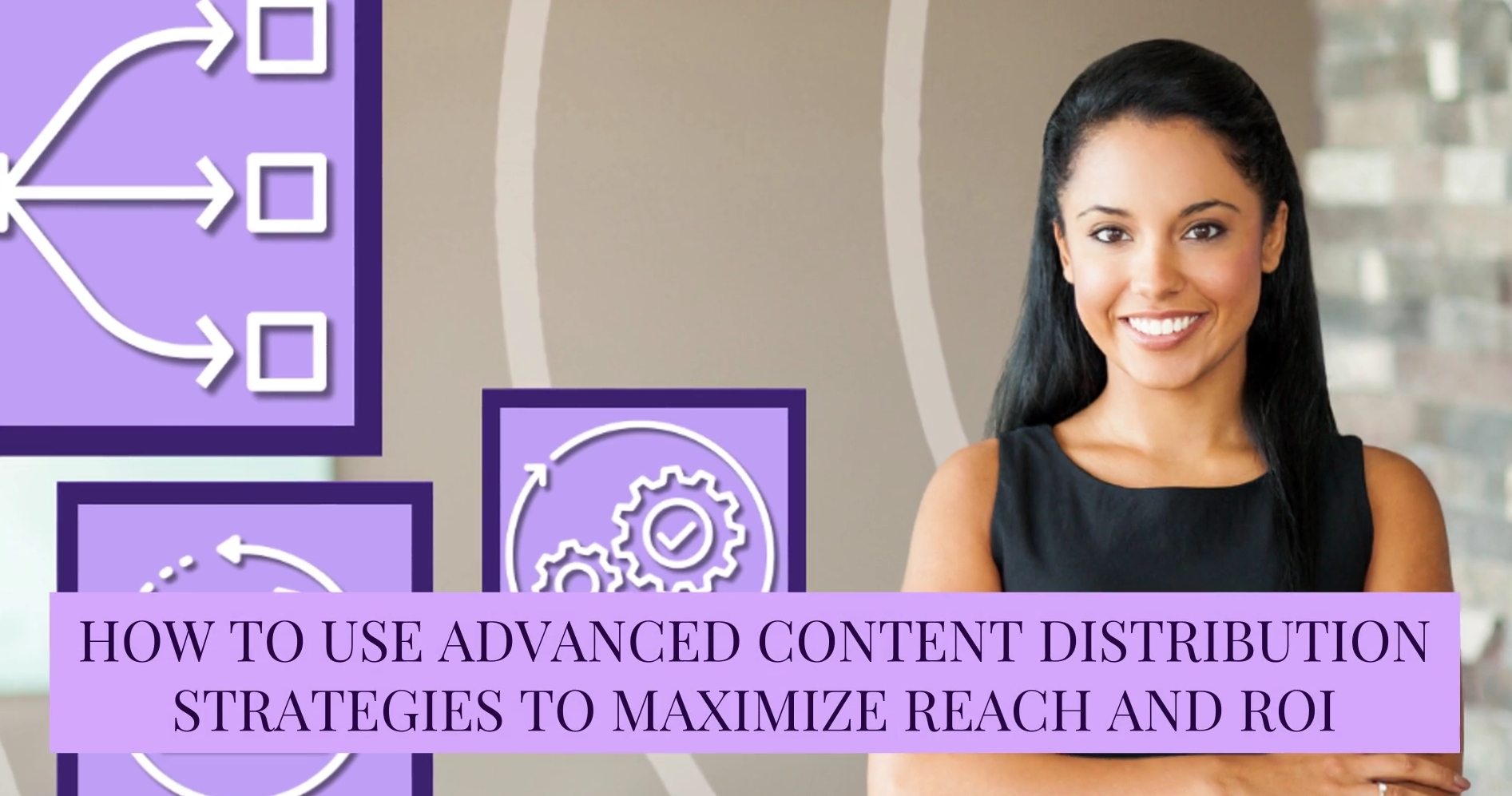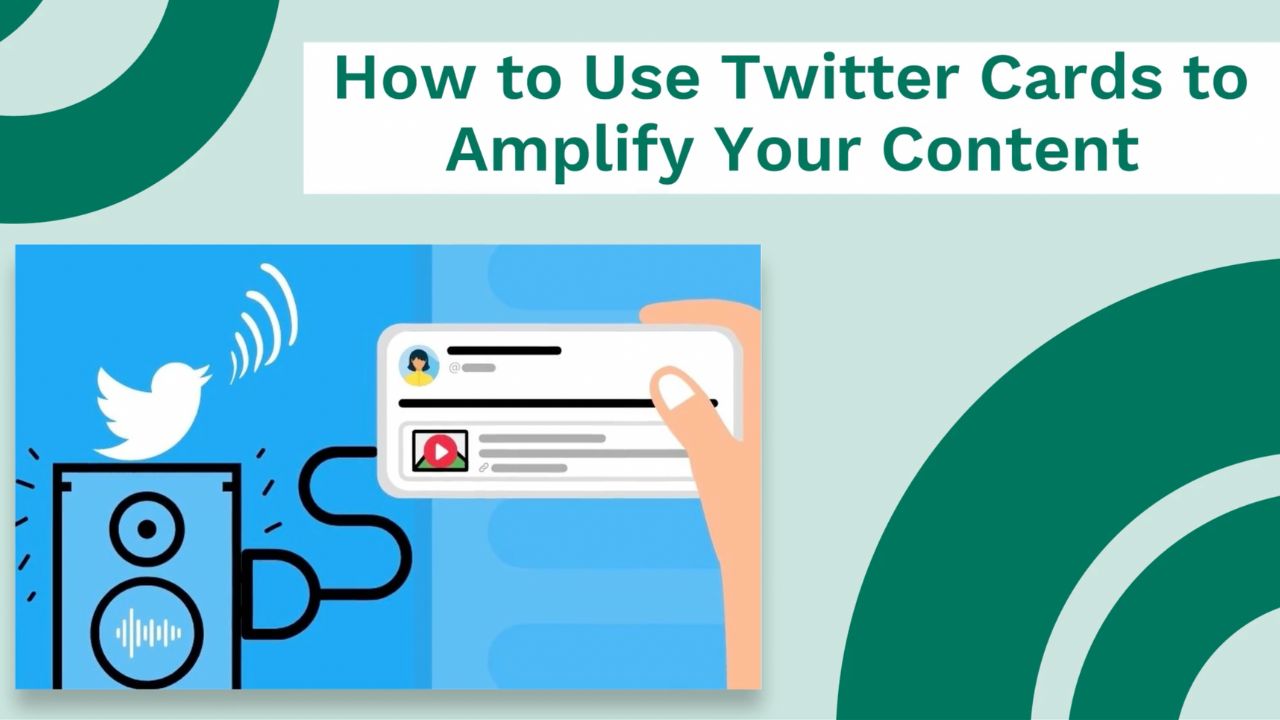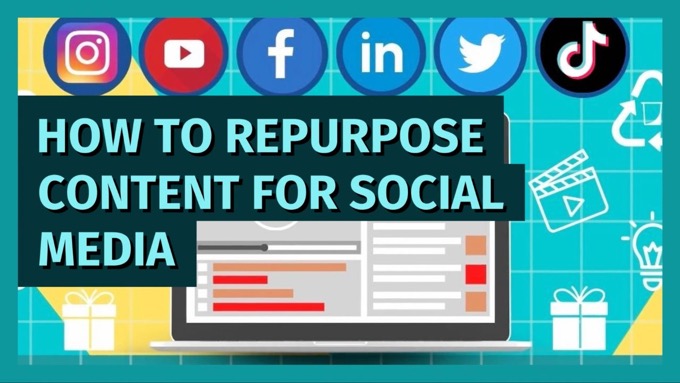Are you consistently producing high-quality content but not seeing the kind of traction you’d like?
It’s a common frustration—investing hours into blogs, videos, and guides that just end up disappearing into the noise.
But rest assured, the problem probably isn’t the content. It’s more likely the distribution.
Without a strategic content distribution plan, even the best content is unlikely to deliver what you’re looking for in terms of ROI.
What if there was a clear way to amplify visibility, reach your target audience across different channels, and drive real engagement that moves the needle on traffic, conversions, and brand awareness? 🚀
In this guide, you’ll learn 10 advanced content distribution strategies designed to help you:
- Get your content in front of the right people at the right time
- Maximize the impact of every piece of content you create
- Drive measurable results across traffic, engagement, and lead generation.
These aren’t basic tips, but proven strategies used by high-performing marketing teams to scale reach without wasting resources (and we have some examples of them in action to prove it!)
So, let’s dive in and find out how to make your content work harder—and, of course, smarter…
10 Advanced Content Distribution Strategies to Get Real Results and Maximize ROI
1. Build a Multi-Channel Distribution Plan That Expands Your Reach
If your content only lives on one platform, you're leaving reach—and ROI—on the table. A multi-channel content distribution strategy ensures your content connects with audiences wherever they are, not just where you're most active.
Your buyers are consuming content in different ways across multiple touchpoints. To stay top-of-mind and drive consistent engagement, you need to plan distribution like a campaign—not an afterthought.
Here’s how to get started:
Key Channels to Prioritize
- Social media—platforms like LinkedIn, X (formerly Twitter), Instagram, and Facebook offer powerful targeting options and real-time engagement. Customize content by platform—what performs on LinkedIn won’t always resonate on Instagram.
- Email newsletters—one of the most direct and controllable channels. Email cuts through algorithm noise and delivers your content straight to your subscribers' inboxes.
- Paid advertising—from Google Ads to Facebook and LinkedIn Sponsored Content, paid channels can quickly amplify your reach—especially when paired with advanced targeting (we’ll cover this later).
- Content syndication—republish high-performing content on third-party platforms like Medium, LinkedIn Articles, and industry blogs to expose your brand to new audiences.
Centralize with a Content Calendar
Coordinate and streamline your efforts with a content calendar that maps out:
- Which channels will promote each piece of content
- When and how often it will be shared
- What format (e.g., post, snippet, story, carousel) each channel requires
A well-structured calendar helps your team stay consistent and prevents wasted distribution opportunities—ensuring that every asset gets maximum exposure.
2. Leverage Owned, Earned, and Paid Media
To truly maximize your content’s reach, you need to think in terms of media mix—not just channels.
Owned, earned, and paid media each play a distinct role in your distribution strategy. The magic happens when you use them together.
Understand the Three Media Types
- Owned media—these are the channels you control—your website, blog, email list, and social profiles. They’re foundational to your strategy, offering consistent, long-term value at a low cost.
- Earned media—this is where others promote your content for you. Think organic shares, backlinks, mentions, user-generated content, and guest post opportunities. It builds credibility, extends your reach, and often brings the most qualified traffic.
- Paid media—this includes everything from Google Ads to social media promotions and sponsored content. It offers immediate visibility and targeting precision, making it ideal for scaling high-performing content or promoting time-sensitive campaigns.
Why the Mix Matters
Relying too heavily on one media type limits your distribution potential. For example:
- Owned media gives you control… but limited organic reach.
- Earned media offers credibility… but it is unpredictable.
- Paid media guarantees exposure… but can drain budgets fast without a plan.
When balanced effectively, this trio supports each other:
- Paid can drive traffic to owned assets.
- Owned content can be amplified and validated through earned mentions.
- Earned placements can be retargeted with paid campaigns.
Oreo's Daily Twist Campaign
In 2012, Oreo celebrated its 100th anniversary with the “Daily Twist” campaign, which exemplified the synergy between owned, earned, and paid media.
The campaign involved creating and sharing 100 daily ads that depicted the iconic cookie in various contexts related to current events.
- Owned media—Oreo utilized its official website and social media channels to publish and promote the daily ads, directly engaging their audience.
- Earned media—the creative and timely content sparked widespread conversations, leading to extensive media coverage and social sharing, effectively amplifying the campaign's reach without additional cost.
- Paid media—to further boost visibility, Oreo invested in online advertising, ensuring the campaign reached a broader audience beyond their existing followers.
This integrated approach resulted in a significant increase in consumer engagement and brand visibility, demonstrating the effectiveness of combining all three media types in a cohesive marketing strategy.
Balance Your Resources
- Budget—allocate spend across high-impact paid campaigns and tools that support earned outreach (like media databases or influencer platforms).
- Time—reserve time not just for content creation, but also for building relationships (earned) and optimizing your own platforms (owned).
- Measurement—track what each media type delivers in terms of reach, engagement, and conversions. Adjust accordingly to double down on what works.

3. Repurpose Content to Extend Its Lifespan and Reach
Creating high-performing content takes time. Repurposing helps you get more from every piece—without starting from scratch.
By adapting your content for multiple formats and platforms, you multiply its value, expand its reach, and speak to audiences who prefer different types of media.
Turn One Asset Into Many
Let’s say you publish a data-driven blog post. You can repurpose it into:
- A LinkedIn carousel highlighting key insights
- A short video or reel summarizing the findings
- An infographic for Pinterest or Instagram
- A podcast discussion or Twitter/X thread on takeaways
- A slide deck for SlideShare or internal sales enablement
Each format taps into a different audience mindset—from skimmers to deep-divers.
Why Repurposing Drives Results
- Maximizes ROI—you extend the value of your original effort.
- Improves SEO—multiple pieces linking back to the same core topic reinforce authority.
- Supports consistency—reinforce your messaging across touchpoints without sounding repetitive.
- Boosts engagement—different formats appeal to different preferences—visual, auditory, or text-based.
Focus on repurposing your top-performing content. Use analytics to identify what’s already resonating, then adapt it for wider distribution.
Build a Repurposing Workflow
- Step 1—identify evergreen or high-performing content each quarter.
- Step 2—outline 3–5 derivative assets per piece.
- Step 3—assign formats based on platform strengths and audience behavior.
- Step 4—schedule distribution in your content calendar to keep momentum going.
A productivity-focused SaaS company repurposed high-performing blog content into condensed ebooks and distributed them through Product Hunt.
The result?
A 200% increase in organic traffic and a doubling of user acquisition—achieved entirely through content repurposing and organic channels.
With the right system in place, repurposing turns one piece of content into a full-funnel campaign.

4. Work With Influencers and Partners
Even the best content has a ceiling when shared only through your own channels.
To break through and reach niche or hard-to-access audiences, strategic partnerships and influencer collaborations are game-changers.
These relationships bring built-in trust, broader reach, and third-party validation—especially valuable in saturated markets.
How Influencers and Partners Amplify Distribution
- Influencers have loyal audiences that trust their recommendations. Whether you're in B2B or B2C, the right influencer can get your content in front of highly targeted prospects with a personal touch.
- Strategic partners—such as complementary brands, SaaS tools, or agencies—can open up collaborative distribution opportunities, from email cross-promotions to co-branded webinars.
High-Impact Collaboration Ideas
- Co-host a webinar with a subject matter expert in your space.
- Co-author a thought leadership piece and publish it on both your blogs.
- Have an influencer create original content (e.g., a video review or commentary) around your asset.
- Run a joint campaign featuring bundled content or exclusive offers.
A mid-sized SaaS company increased demo signups by 143% after teaming up with niche influencers to share gated content across YouTube and LinkedIn.
Use the Right Tools and Outreach Strategy
- Identify influencers using platforms like BuzzSumo, Upfluence, or SparkToro. Focus on engagement metrics, not just follower count.
- Craft a compelling pitch that highlights mutual value—offer content exclusivity, co-marketing opportunities, or shared audience data.
- Track performance to ensure ROI—use UTM links, discount codes, or custom landing pages to measure traffic and conversions from each collaboration.
A well-executed partnership boosts reach, while at the same time building lasting authority and trust in your niche.
5. Use Advanced Targeting in Paid Campaigns to Reach the Right Audience
While organic methods are more a long-term play, paid distribution gives you speed and more immediate scale—but the real advantage lies in precision.
Modern ad platforms offer powerful targeting tools that help you get content in front of the right audience, at the right time, with minimal waste.
Whether you're driving traffic to a lead magnet, webinar, or blog post, smart targeting transforms good campaigns into great ones.
Go Beyond Basic Demographics
Advanced targeting features allow you to zero in on high-intent audiences using:
- Lookalike audiences—platforms like Facebook, LinkedIn, and Google allow you to build audiences that mirror your best customers based on existing data.
- Interest and behavior targeting—reach users based on what they read, click, and engage with online—not just who they are.
- Job titles and industries—on LinkedIn, you can target by role, seniority, and even company size—ideal for B2B campaigns.
- Retargeting campaigns—re-engage users who’ve interacted with your content but haven’t converted yet.
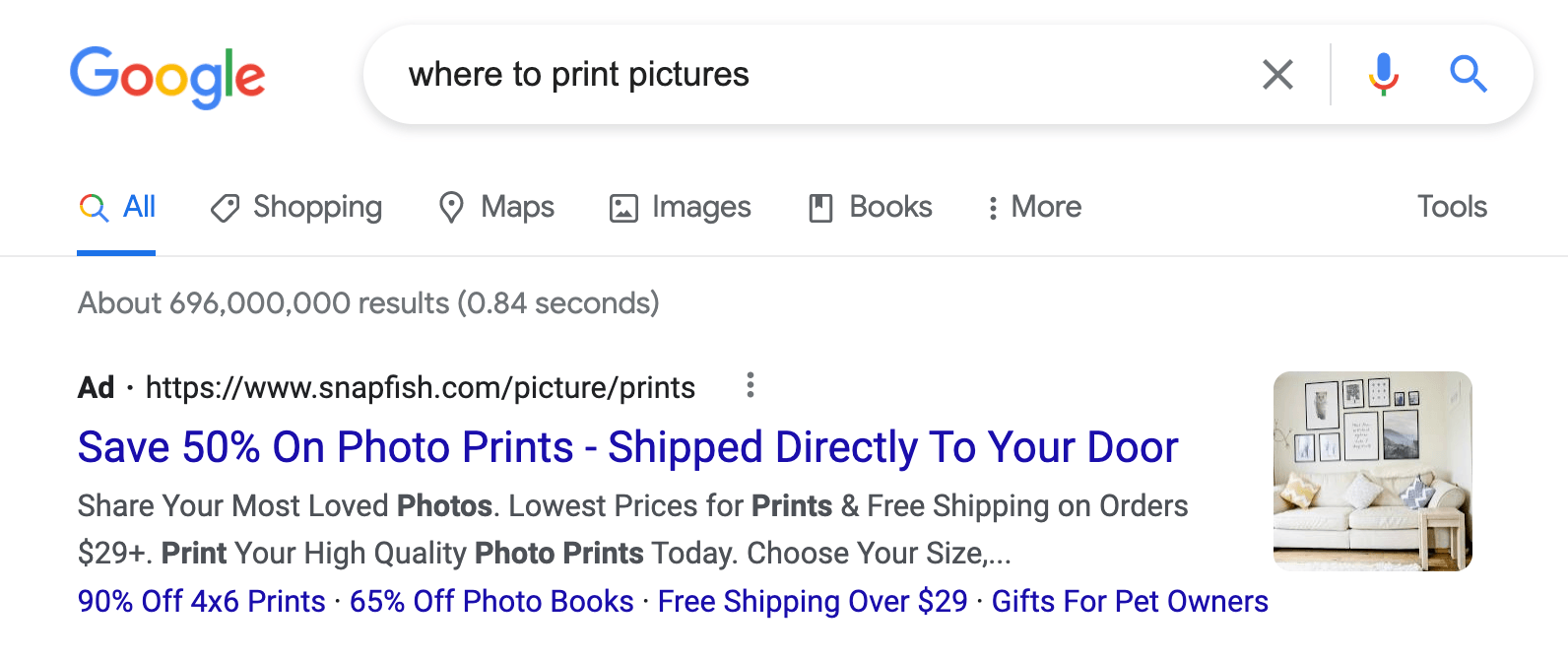
Start Smart, Then Scale
- Begin with a small-budget test. Run A/B tests on creative, headlines, and audience segments.
- Track early signals like CTR, bounce rate, and conversion rate to refine your targeting.
- Once optimized, scale spend strategically, focusing only on the top-performing segments.
Align Content Format with Funnel Stage
- Top of funnel—use attention-grabbing videos or blog posts with broad interest targeting.
- Middle of funnel—promote case studies, webinars, or comparison guides with lookalike or retargeting audiences.
- Bottom of funnel—run conversion-focused ads offering demos or consultations to warm leads.
A key factor in effective paid distribution isn’t just reach, but relevance. When your targeting is dialed in, every dollar you spend moves the needle on measurable outcomes.
6. Syndicate Content on High-Traffic Platforms to Capture New Audiences
Why wait for your audience to come to you when you can take your content to where they already are?
Content syndication extends the reach of your top-performing pieces by placing them on high-traffic platforms—without creating new content from scratch.
It’s a smart way to amplify visibility, boost referral traffic, and establish authority with new audiences.
Where to Syndicate Your Content
- Medium—great for thought leadership and evergreen blog content with a professional tone.
- LinkedIn Articles—ideal for B2B marketers looking to build influence and engagement among peers and decision-makers.
- Industry blogs and niche media sites—many accept syndicated contributions and can drive highly qualified traffic.
- Content aggregators—sites like Flipboard, Zest, or GrowthHackers allow for broader exposure among marketing-savvy readers.
One company distributed content across social and syndication platforms and saw a 4,000+ increase in page views in less than a month—without creating a single new post—proving that syndication is an effective way to drive more traffic without creating new content.
Protect SEO with Canonical Tags
Worried about duplicate content? You should be—but there’s a solution.
When republishing, always include a canonical tag pointing back to the original source on your site. This tells search engines where the “master” version lives, preventing SEO penalties and protecting your rankings.
Focus on High-Performing Evergreen Content
Not every post is syndication-worthy. Start with:
- Evergreen guides or how-tos that remain relevant over time
- Content with proven traction—high engagement, backlinks, or conversions
- Posts that offer unique insights or data, increasing your chances of acceptance on third-party sites
Syndication isn’t about flooding the internet with copies—it’s about extending the life and reach of your best ideas in front of fresh, qualified eyes.
7. Incorporate Email Marketing in Distribution for Direct Engagement
Social algorithms change. Organic reach fluctuates. But email? It goes straight to your audience’s inbox—making it one of the most reliable and effective content distribution channels you have.
Done right, email marketing doesn’t just distribute content—it builds relationships, nurtures leads, and drives action.
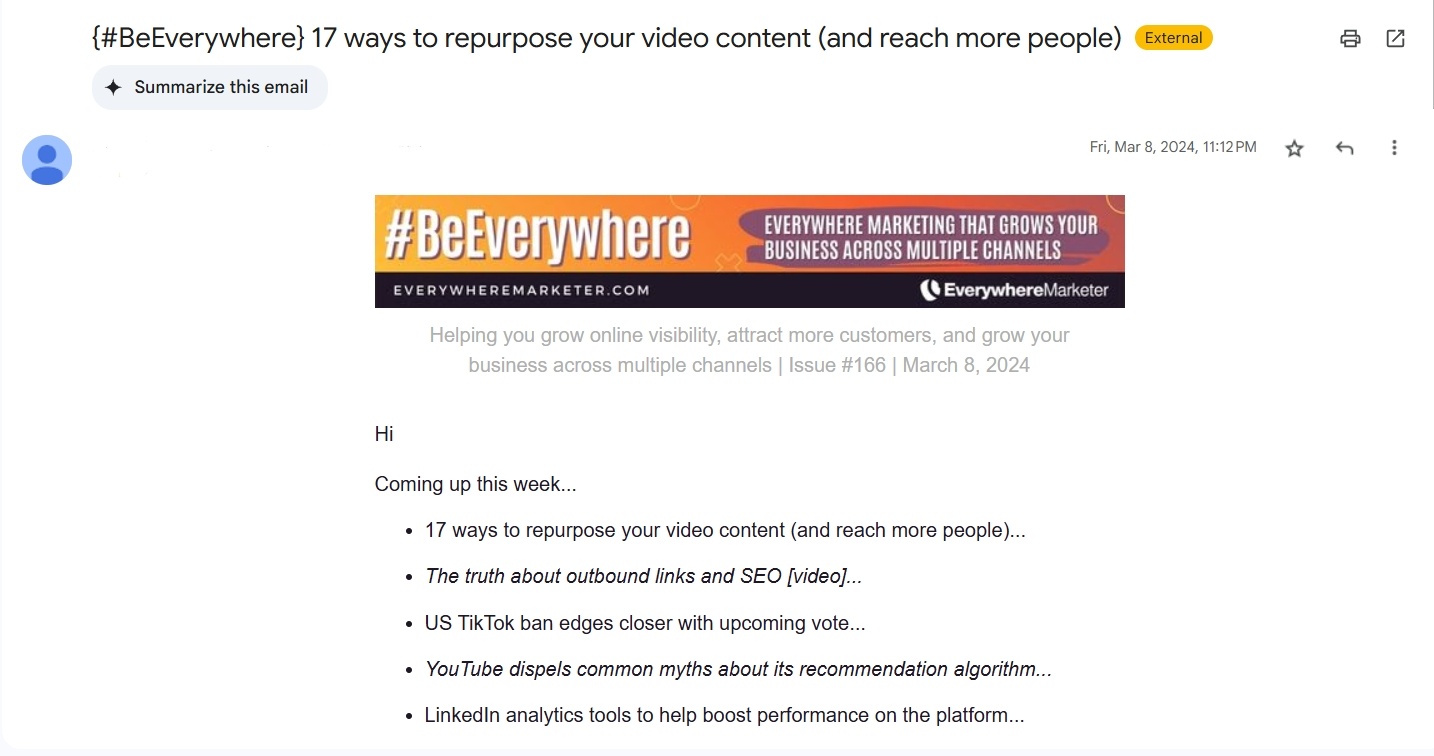
Why Email Still Outperforms
- Direct access—you’re not competing with algorithms—your message lands directly in the inbox.
- High engagement—email consistently outperforms social in click-through and conversion rates.
- Personalization power—advanced segmentation lets you tailor content by interest, behavior, or lifecycle stage.
Smarter Ways to Share Content via Email
- Newsletter features—include top-performing content in a “What’s New” or “Top Reads” section.
- Automated workflows—trigger emails that deliver relevant content based on user behavior—like visiting a blog post or downloading a guide.
- Segmentation strategy:
- New subscribers? Send beginner-friendly explainers.
- Engaged users? Deliver advanced playbooks or industry insights.
- Dormant contacts? Re-engage with digest-style roundups.
ECS Publishing Group, specializing in sheet music across various genres, aimed to grow its audience and boost sales within a niche market.
By implementing a strategic email marketing campaign that included personalized content and targeted newsletters, they achieved a 10% increase in their email list and experienced a notable spike in sales.
This approach effectively engaged their audience and expanded their reach in a challenging industry.
Repurpose Blog Content Into Email Assets
Don’t just share links—pull key takeaways, add commentary, and format the email for easy scanning. This gives your content new life and increases its perceived value.
A/B test subject lines and CTAs to boost open and click-through rates—and continuously refine what resonates with your audience.
Email isn’t just a channel—it’s your owned, high-converting distribution engine.
8. Engage in Content Communities and Groups to Build Targeted Visibility
If you're only distributing content on your own channels, you're missing out on high-intent audiences already gathered in niche communities.
Forums, groups, and professional networks can be goldmines for content exposure—if you approach them the right way.
These spaces are built on trust, not self-promotion. So distribution here is about engagement first, content second.
Where to Share for Maximum Impact
- LinkedIn Groups—active communities of industry professionals, ideal for B2B content.
- Slack and Discord communities—many niches—from SaaS to eCommerce—have private groups where members exchange insights daily.
- Reddit threads—subreddits like r/marketing or r/digital_marketing offer focused, no-fluff engagement.
- Facebook Groups—still powerful in some verticals, especially for community-led discussions.
Best Practices for Authentic Engagement
- Start by contributing—answer questions, join conversations, and build visibility as a helpful expert—not a content dropper.
- Add value first—only share content when it’s relevant to the discussion or solves a problem others are facing.
- Use commentary—don’t just paste a link—explain why it’s worth clicking. Frame it around a specific takeaway or insight.
- Follow the rules—each group has its own guidelines. Violating them can kill your credibility or get you banned.
Create a Community Engagement SOP
If you or your team plan to use this strategy regularly, document:
- Key communities to monitor and join
- Weekly engagement goals (e.g., 3 helpful comments, 1 shared resource)
- Topics or questions your content can support
By becoming a trusted voice, you’ll earn the right to share—and people will actually want to hear what you have to say.
9. Optimize Content for Search to Enhance Organic Reach
Search is one of the most sustainable content distribution channels available. When your content ranks well, it works 24/7—bringing in targeted, high-intent traffic without additional spend.
But for that to happen, SEO can’t be an afterthought. It must be baked into your distribution strategy from the start.
Why SEO Is a Distribution Channel
Think of Google as the world’s biggest content discovery engine. If your blog post solves a problem better than what's already out there—and it's optimized accordingly—your audience will find it.
SEO is not restricted to just optimizing for certain keywords, but also about:
- Search intent alignment—does your content answer what users are really looking for?
- On-page structure—are your headlines, subheads, meta descriptions, and alt text optimized?
- Technical health—is your site fast, mobile-friendly, and crawlable?
Key Optimization Tactics
- Headline optimization—craft compelling, keyword-aligned titles that invite clicks.
- Internal linking—guide users to related content on your site to boost session time and page views.
- Schema markup—help search engines better understand your content and improve how it appears in results.
- Keyword targeting—use tools like SEMrush, Ahrefs, or Google Search Console to identify:
- High-volume, low-competition keywords
- Long-tail queries relevant to your audience
- Content gaps you can capitalize on
Updating older blog posts with fresh stats, better structure, and optimized keywords can lift rankings significantly—without creating new content.
Build SEO Into Your Publishing Workflow
- Perform keyword research before writing.
- Include internal links to cornerstone pages.
- Optimize metadata before hitting publish.
- Monitor performance monthly and refresh top posts quarterly.
SEO is the engine behind your evergreen distribution strategy—and when optimized properly, your content becomes an inbound lead machine.
10. Use Analytics to Measure and Refine Your Strategy
If you’re not measuring your content distribution performance, you’re guessing—not optimizing.
Analytics turn your strategy from a checklist into a feedback loop that drives continuous improvement and higher ROI.
Rather than asking, “Did we publish it?”, consider asking, “Did it work—and how can we make it better?”
Key Metrics to Track
- Traffic sources—where is your audience coming from? Break it down by channel—organic, referral, social, email, and paid.
- Engagement rates—look at bounce rate, average time on page, scroll depth, and social interactions to gauge content quality.
- Conversion metrics—measure content-driven actions like email signups, demo requests, or downloads.
- Content-specific KPIs:
- Email CTR from newsletters
- CPC and engagement for paid promotions
- Backlinks and domain authority growth from syndication or earned media
Samsung SDI used performance analytics from LinkedIn to identify high-engagement segments and optimize their content delivery. By doubling down on what worked—targeted SlideShare content to energy professionals—they achieved a 7X ROI compared to previous campaigns.
Set Monthly KPIs and Review Performance Regularly
- Define success per channel (e.g., traffic volume for SEO, engagement rate for social, CPL for paid).
- Use dashboards in Google Analytics, HubSpot, or Looker Studio to centralize insights.
- Run monthly strategy reviews to spot trends, flag underperformers, and double down on top channels.
Analytics isn’t just the final step—it’s your roadmap to doing more of what works and cutting what doesn’t.
With the right data, your distribution strategy becomes sharper, faster, and more efficient over time.
Regularly analyze performance metrics to refine your content distribution strategy and improve future outcomes.Click To Post OnFrequently Asked Questions
What should I do if my content isn't gaining traction despite being high-quality?
Focus on implementing a strategic content distribution plan to maximize reach and ROI.
Why is it important to leverage owned, earned, and paid media in content distribution?
Different media types complement each other to enhance distribution potential and maximize reach.
How can I extend the reach of my content without creating new assets?
Repurpose existing content into various formats to reach new audience segments effectively.
Why should I collaborate with influencers and partners in content distribution?
Influencers and partners bring trust, broader reach, and third-party validation to your content distribution efforts.
How can paid campaigns with advanced targeting improve content distribution results?
Advanced targeting tools help get content in front of the right audience with minimal waste, enhancing campaign effectiveness.
To Conclude
You’ve invested time, budget, and creativity into building high-quality content. Now it’s time to make sure it performs.
From building a multi-channel distribution plan and balancing media types, to leveraging paid targeting, influencer partnerships, and SEO—each of the 10 strategies we’ve covered is designed to help you amplify reach and drive measurable ROI.
Each strategy builds on the others—so the more you layer them in, the more powerful your distribution becomes.
Don’t let your content sit idle. Put it to work.
Use these proven tactics to drive engagement, attract qualified leads, and get the ROI your content deserves.
